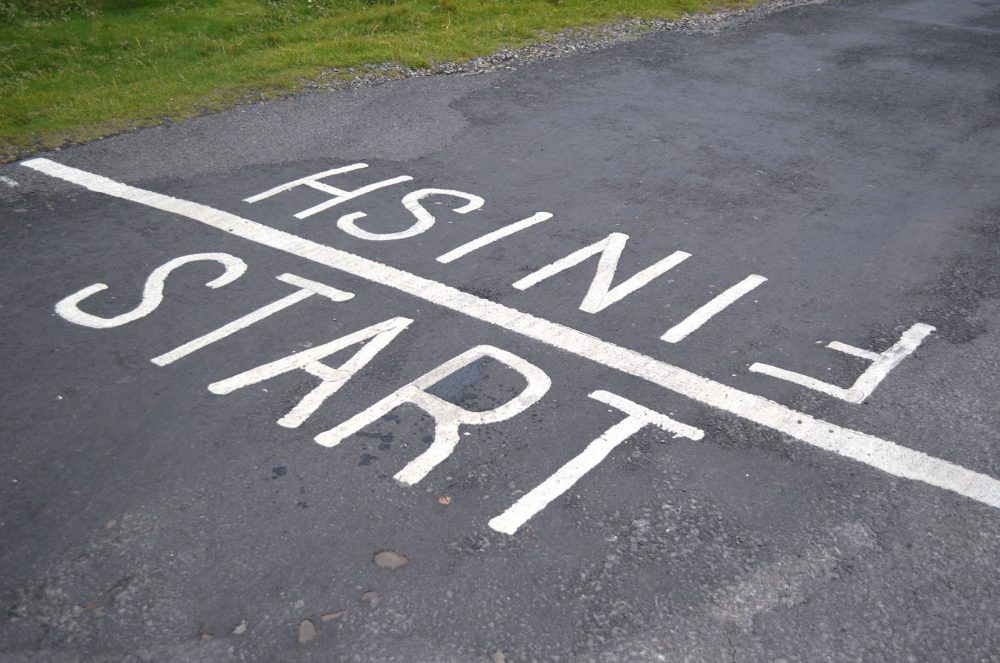
Today’s guest post is by editor and author Joe Ponepinto (@JoePonepinto).
As an editor who has worked at several literary journals, I’ve read thousands of fiction submissions over the past 15 years, so many that the endings—the climax and resolution—are too often predictable or uninspiring. Like many journal editors, when it comes to selecting work for publication, I’ll always choose stories that take me someplace new and unexplored.
How do you add intrigue and a sense of exploration to your fiction?
One way is to start at the end and move forward instead of back. That may sound counterintuitive, so let me describe how and why it works.
When reading from the submission queue I often get the feeling the writer has started by envisioning the climax or epiphany of the story and then worked backward to provide a well-grounded and logical path toward reaching it. There are several potential problems that arise from this approach. The most obvious ones are that the story fills up with background details and becomes tied to that logical and therefore predictable path. Such an approach mutes the story’s potential tension, and can turn the work into something more like an essay than creative writing, dependent on facts instead of narrative tension.
That may be when it’s time to ask what if and play with the story’s possibilities. What if the story started at the point of climax, with all that background and development already incorporated into the characters and their situations? Where would it go from there? What greater or more profound revelation might it achieve?
For starters, the characters would begin the story as fully-formed human beings, with motivations and goals, with pasts that readers can identify with through inference instead of exposition. It would also begin at a point of greater intrigue, challenging the reader to deduce how character traits and allusions to past events influence the characters’ decisions as they move forward. It would preclude much of the backstory that overwhelms many otherwise good works of fiction, and immerse the reader in an exploration of some deeper meaning, one in which readers can become willing participants. Working with this model also eliminates another problem I often see in the submission queue, that of the writer withholding evidence in an attempt to create a surprising reveal later on. Trust me, the surprise is never as satisfying as your reader expects.
Personally, when I write I often try to begin the story from a place at which another writer might choose to end. I may have little idea where the writing will take me, and that’s partly the point—if I am intrigued to find out where the narrative might go, the reader might be also. The idea is in line with Kurt Vonnegut’s famous advice to begin a story “as close to the end as possible.”
Here’s an example from a story I wrote and published a few years ago, called “This Day of False Spring.” It concerns a suburban neighborhood plagued by a lewd graffiti artist, and their search to find him. As it turns out, the criminal is one of their own, a neighbor whose wife has left him, and who responds to his frustrations and the uselessness of bourgeois life. I could have written it straight to that point, revealing the culprit at the end, and it would have been a typical short story, and many readers would have guessed the outcome. But then I wondered how it might go if I revealed his presence within the first couple of pages. The character would have to hide his guilt while joining the neighbors in a late-night stakeout, and he would still have to work out the reasons for his failed marriage, as well as why he turned to graffiti as his outlet. By offering the reveal early I doubled the story’s tension, and set the groundwork for an even greater climax at the end.
The next time you have a story idea, give this technique a try. It will add narrative tension, deepen characterization, and force you to think past the original boundaries of your premise. It may turn into a story that is even more surprising than you had planned. This strategy can also be especially useful in writing flash fiction, where there is no space for background and long narrative arcs.
Joe Ponepinto is a senior editor at Orca, A Literary Journal, and the owner of 55 Fathoms book publishing. He’s the author of the novels Mr. Neutron and Curtain Calls. He writes, edits, and teaches in western Washington.

When you read any article, you can immediately see when the car understands the topic of the article or not. In this case, you can immediately see that the author understands this topic and everything is written at a high level. Thank you Joe Ponepinto for that.
Thanks, Emma. This is one that I’ve given a lot of thought to. Glad you appreciated it.
Wow – this idea matches up perfectly with a story line that I had just begun creating. Great food for thought! Thanks!
Glad I could be helpful.
[…] Some writers get hung up on their openings. Roz Morris has tips on how to get going when stuck at the beginning of your novel, and Joe Ponepinto suggests the end may only be the beginning. […]